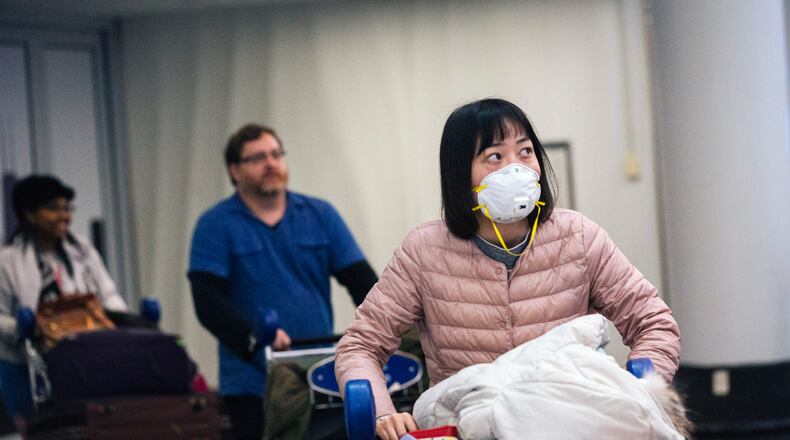No one in Ohio has tested positive for the respiratory virus, but one person is under investigation as of Tuesday.
RELATED: Do masks work? How to prepare for the virus?
The person has shown symptoms of respiratory illness and has either traveled to China or been in close contact with a person with coronavirus within 14 days of symptoms starting, according to the Ohio Department of Health.
The Ohio Department of Health is not disclosing where in Ohio the person is being monitored.
Six Ohioans who were under investigation for the new coronavirus have tested negative, according to ODH.
There are 53 confirmed cases in the U.S., including 36 who were on the Diamond Princess cruise ship.
“In Ohio, we’ve taken a very conservative approach,” Ohio Department of Health Director Dr. Amy Acton told Cleveland.com. “The CDC has had varying levels of guidance, because it’s an evolving situation.”
The virus, 2019-nCoV, is part of a large family of different coronaviruses. These viruses may cause mild to severe respiratory illnesses with symptoms of fever, cough, and shortness of breath.
Sometimes a novel — or a new type — of coronavirus starts to circulate among people. This happened with severe acute respiratory syndrome (SARS) in 2003 and Middle East respiratory syndrome (MERS) in 2014, and now 2019-nCoV, which started spreading in December.
For those with confirmed 2019-nCoV infections, some people have had little to no symptoms while other people have become severely ill.
New infections and deaths in China are falling, but they are rapidly increasing in South Korea, Italy and Iran.
On Monday, the White House sent lawmakers an urgent $2.5 billion plan to address the deadly coronavirus outbreak, whose rapid spread and threat to the global economy rocked financial markets.
The White House budget office said the funds are for vaccines, treatment and protective equipment. The request was immediately slammed by Democrats as insufficient and came as coronavirus fears were credited with Monday’s 1,000-plus point drop in the Dow Jones Industrial Average and are increasingly seen as a potential political threat to President Donald Trump.
The request was released Monday evening and came as key government accounts were running low. The Department of Health and Human Services had already tapped into an emergency infectious disease rapid response fund and was seeking to transfer more than $130 million from other HHS accounts to combat the virus but is pressing for more.
“Today, the Administration is transmitting to Congress a $2.5 billion supplemental funding plan to accelerate vaccine development, support preparedness and response activities and to procure much needed equipment and supplies,” said White House budget office spokeswoman Rachel Semmel. “We are also freeing up existing resources and allowing for greater flexibilities for response activities.”
The administration is requesting $1.25 billion in new funding and wants to transfer $535 million more in funding from an Ebola preparedness account that’s been a top priority of Democrats. It anticipates shifting money from other HHS accounts and other agencies to complete the $2.5 billion response plan.
Senators returning to Washington after a weeklong recess will receive a classified briefing Tuesday morning on the government’s coronavirus response, a Senate aide said. A spokeswoman for Senate Appropriations Committee Chairman Richard Shelby, R-Ala., said the panel “will take their input into account as we continue to do our due diligence to determine what additional resources are necessary.”
The Associated Press contributed to this story.
About the Author
